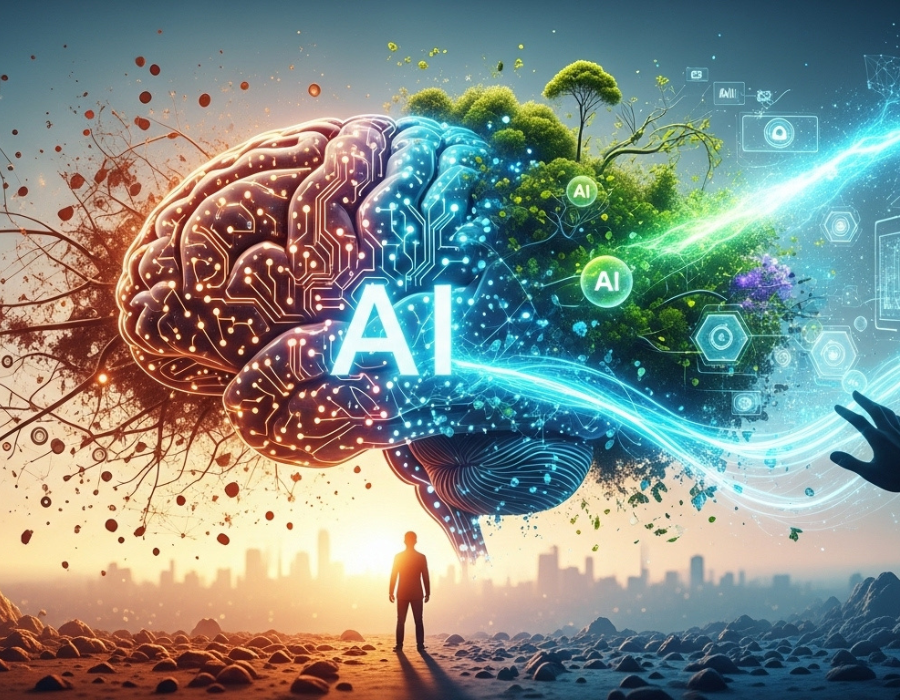The rapid advancement of artificial intelligence (AI) technologies has altered the way industries operate, how businesses engage with customers, and even how individuals interact with the world around them. As AI continues to evolve, so too must our approaches to integrating these technologies into everyday life and business practices. Adapting to the evolving landscape of artificial intelligence calls for a proactive mindset, a commitment to continuous learning, and a willingness to embrace change.
Understanding the Current AI Landscape
To effectively adapt to the evolving landscape of AI, it is essential to understand the current state of technology and its implications. AI encompasses various applications, from machine learning and natural language processing to robotics and computer vision. Each of these areas is advancing at an unprecedented pace, resulting in transformative impacts across multiple sectors, including healthcare, finance, transportation, and entertainment.
For instance, AI has revolutionized healthcare by enabling predictive analytics to improve patient outcomes and streamline operations. In finance, algorithms are being utilized to detect fraud in real-time, while in transportation, self-driving vehicles are reshaping logistics and personal travel. In entertainment, recommendation systems powered by AI have changed how consumers engage with content. The breadth of AI’s influence signifies the importance of understanding its dynamics to remain relevant and competitive.
The Importance of Continuous Learning
The fast-paced nature of AI development necessitates continuous learning and adaptation. Professionals across all industries must cultivate a mindset of lifelong learning to keep up with new tools, methodologies, and best practices. This entails not only acquiring technical skills related to AI but also developing soft skills such as critical thinking, creativity, and adaptability.
Organizations can foster a culture of continuous learning by providing employees with opportunities for professional development. Workshops, online courses, and industry conferences can offer valuable insights into emerging trends and technologies. Encouraging employees to stay informed about AI advancements and engage in discussions surrounding ethical implications, policy changes, and industry standards is equally important. This proactive approach to education will help individuals and organizations remain agile in the face of evolving AI capabilities.
Embracing Ethical Considerations
As AI becomes more integrated into our daily lives, ethical considerations surrounding its use have come to the forefront. Issues such as data privacy, algorithmic bias, and the transparency of AI decision-making processes require careful attention. Companies that prioritize ethical AI practices will not only enhance their reputation but also foster trust among consumers and stakeholders.
To adapt effectively, organizations should establish clear ethical guidelines for AI development and deployment. This may involve forming diverse teams to ensure a wide range of perspectives is considered when designing algorithms. Additionally, involving ethicists or legal experts in discussions about AI applications can help mitigate potential risks associated with bias and discrimination.
Implementing AI Responsibly
Adaptation to the evolving landscape of AI involves not only understanding the technology but also implementing it responsibly. Organizations must carefully consider how they integrate AI into their operations, ensuring that the benefits of automation and efficiency do not come at the expense of human jobs or societal well-being. A balanced approach requires companies to assess the potential impacts of AI on their workforce and develop strategies to support employees through transitions.
This may involve offering retraining programs to help workers acquire new skills that align with the changing job landscape. By empowering employees to transition into new roles created by AI advancements, organizations can maintain a motivated workforce while harnessing the benefits of technology. Additionally, transparent communication about AI initiatives can alleviate employee concerns and foster a collaborative environment where technology and human intelligence complement one another.
Navigating AI Changes in the Workforce
Adapting to the evolving landscape of artificial intelligence is not just about adopting new technologies—it’s about understanding how those technologies reshape industries, workflows, and even human behavior. Navigating AI changes requires foresight, flexibility, and a commitment to aligning innovation with long-term goals. Businesses that recognize the shifting dynamics early can proactively adjust their strategies, retrain their teams, and identify new opportunities for growth rather than reacting to disruption after it occurs.
Individuals, too, must view AI not as a threat, but as a catalyst for personal and professional development. Staying curious, experimenting with AI tools, and engaging in cross-disciplinary learning can empower professionals to remain competitive in a rapidly changing environment. In essence, navigating AI changes is about blending adaptability with purpose—ensuring that technological evolution serves humanity rather than the other way around.
Emphasizing Collaboration Between Humans and AI
A key aspect of adapting to the evolving landscape of AI is recognizing the potential for collaboration between humans and machines. Rather than viewing AI as a replacement for human labor, organizations should embrace it as a tool that can enhance human capabilities. This symbiosis can lead to increased productivity and improved outcomes.
For instance, in healthcare, AI can assist doctors by analyzing vast datasets to identify patterns that may not be immediately apparent. This allows healthcare professionals to make more informed decisions without diminishing their critical role in patient care. Similarly, in the creative industries, AI-generated content can serve as a starting point for human creators, inspiring new ideas and perspectives.
Investing in Future Innovations
To remain competitive in the evolving AI landscape, organizations must invest in future innovations. This involves not only adopting current technologies but also keeping an eye on emerging trends. Staying informed about new developments in AI research and potential applications can provide businesses with a strategic advantage.
Collaboration with academic institutions, technology firms, and industry organizations can facilitate access to cutting-edge research and insights. By participating in partnerships that focus on innovation, companies can better position themselves to leverage AI advancements and drive growth.
In conclusion, adapting to the evolving landscape of artificial intelligence requires a multifaceted approach. By prioritizing continuous learning, embracing ethical considerations, implementing AI responsibly, and fostering collaboration between humans and machines, individuals and organizations can navigate AI changes effectively. As AI continues to shape our world, those who are proactive in their adaptation will be best positioned to thrive in this dynamic environment.


